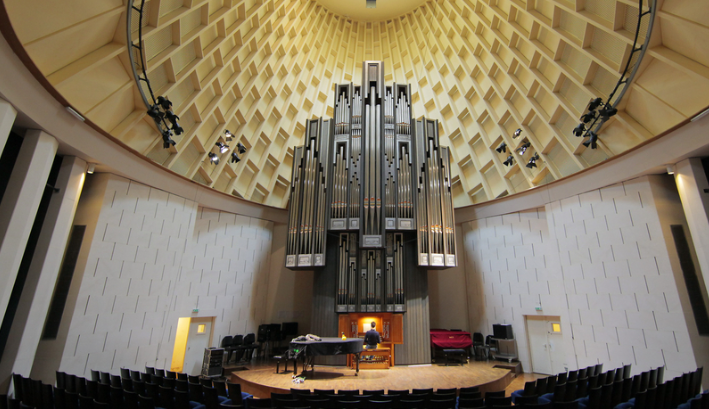Founded in 1795, the Conservatoire national Supérieur de Musique et de Danse de Paris is an international benchmark in its fields of study. A historical model for many institutions in Europe and beyond, the school offers some of the most renowned musical and choreographic programmes in the world.
True to its tradition of excellence and its pioneering role, the Conservatoire accompanies young creators and performers while integrating the latest advances in research and new technologies, for careers at the highest level.
The Conservatoire has a worldwide network of partners and participates in various European networks, such as the European Chamber Music Academy (ECMA) and its joint European Master Programme ECMAster, and in METRIC and its annual Impro Intensives.
The Paris Conservatory has become an exceptional educational centre
A historical model for many institutions in Europe and beyond, the school offers some of the most renowned music and choreography programmes in the world. True to its tradition of excellence and its pioneering role, the Conservatoire accompanies young creators and performers while integrating the latest advances in research and new technologies for careers at the highest level.
The Conservatory has a worldwide network of partners and participates in various European networks, such as the European Chamber Music Academy (ECMA) and its joint European Master programme ECMAster, as well as the METRIC programme.
The Paris Conservatory’s offer
Two hundred years after its creation, the Conservatoire has a 34,000 m2 building (or 15,400 m2 of usable space, excluding technical reserves) adapted to its specific needs.
78 classrooms
5 large dance studios (140 to 180 m2);
3 opera classrooms (100 m2);
3 large classrooms for percussion and electroacoustics;
3 auditoriums with more than 40 seats
Exceptional facilities of the Paris Conservatory
A further 64 classrooms (40 to 60 m2) for most instrumental, vocal and theory classes (classrooms are equipped with instruments adapted to different types of education; about thirty rooms have audio or video equipment).
- 70 work studios (from 15 to 25 m2), reserved for individual or small-group work and equipped according to the specific needs of each of the disciplines (organ studios, percussion studios, electroacoustic studios).
- 3 examination and competition rooms behind closed doors, each occupying 100 m2.
- 7 orchestra stages without an audience, for rehearsal work, distributed as follows:
- 1 large orchestra rehearsal platform (400 m2);
- 1 stage for instrumental ensembles (170 m2);
- 4 medium-sized orchestra stages (from 60 to 120 m2);
- 1 jazz set (100 m2).

The very good acoustics of the large stage allow for high quality recordings.
3 public rooms
These are designed for opera performances, concerts, recitals, balls or other public performances.
- The Nadia-Boulanger hall (236 seats) is equipped with a Rieger Romantic organ with mechanical action, equipped with three manuals, pedalboard and forty-six stops. It is intended for class and organ recitals as well as chamber music concerts.
- The Rémy-Pflimlin hall (374 seats), a former opera house, is mainly wood-panelled and was designed on the model of a classical Italian theatre. It hosts opera and choreographic performances. Its stage offers an area of about 180 m2 (16 m long by 11 m deep). The 90 m2 orchestra pit (about 50 musicians) is equipped with an orchestra lift.
- The Maurice-Fleuret space (approximately 400 m2, 175 seats), a privileged place for creation, has been designed to host a variety of contemporary activities in which musicians, singers and dancers express themselves.

